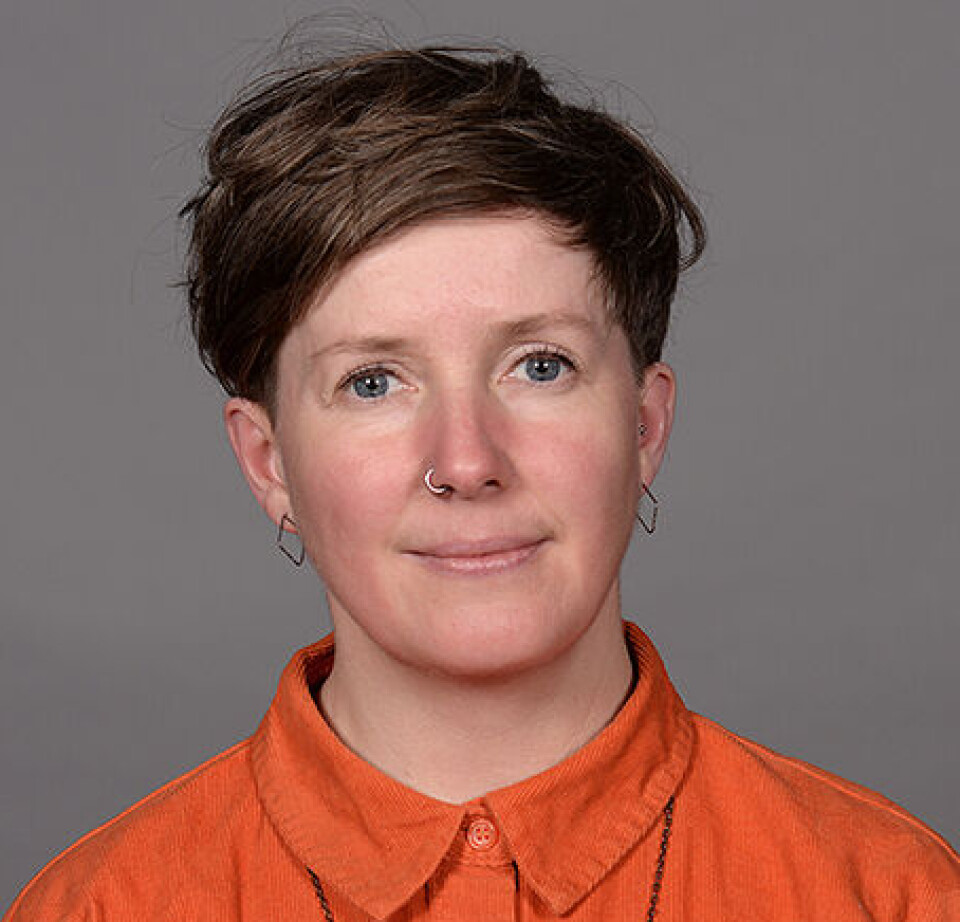THIS CONTENT IS BROUGHT TO YOU BY University of Oslo - read more

Music can repair some of the damage inflicted by a prison sentence
By creating music, people in prison can gain a fresh perspective on themselves.
Recently, a band from Norwegian prisons visited a recording studio at the University of Oslo. They had an idea for a production based on the melody Für Elise, composed by Ludwig van Beethoven in 1810.
The group wanted to compose a song about a woman named Elise in prison. In a democratic manner, they collaboratively decided how to arrange the various contributions: instruments, singing, and rap.
Music researchers from the University of Oslo observed them. Throughout the day, they also talked to the group about what the music meant to them.
“Several described how the music helps rebuild their sense of humanity. Just playing and performing together gives a strong sense of social support. They achieve something as a community, and the bonds and trust with the others are strengthened,” says Lucy Cathcart Frödén.
She is a researcher at the University of Oslo's Department of Musicology.
Music can change a destructive self-image
In the research project, Frödén and her colleagues explore how music is utilised and beneficial within Norwegian, Irish, and Icelandic prisons.
The group that recorded their version of Für Elise, Venjas Harem, is a result of the Music in Prison and Freedom project. Musician Venja Ruud Nilsen started it 30 years ago. The group consists of people who are, or have been, in prison. It is led by Nilsen, but the songs are written and arranged collaboratively.
“Something we've seen clearly in the research, and which members of Venjas Harem also tell us, is that music helps to broaden the image people in prison have of themselves and others. Many feel they have been confined to destructive labels. We are all more, and music encourages us to explore what we are and what we can become,” says Frödén.
She adds that it also takes courage to showcase what you create.
“Especially when performing something new, you must dare to be open and vulnerable. This can lead to trusting and supportive relationships,” she says.
A way out of depression
In a book chapter set for publication in 2025, Frödén and colleague Áine Mangaoang discuss the rapper Emil Cabral Hortman – also known by his stage name Belizio – and the significance music had for him while he was in prison.
According to Hortman, he was labelled a criminal from a young age.
At the age of 16, he was imprisoned in Spain, where he awaited his sentence for 7 months. Music therapy helped him articulate his feelings and express himself. He discovered that he could create something in an otherwise challenging and difficult situation.
'For people who are in a vulnerable position or in pain, creative work can really help you get out of these depressions, these circles your brain is getting into, and that is why creative therapies like music, or photography, or painting should be used here [in prisons],' Hortman explains to the researchers in the book.
Finding a new identity
“Often, we think of music in prisons as merely a way to pass the time and develop skills. However, much of it is about the opportunity to adopt various identities through art,” says Frödén.
Expressing oneself creatively, whether through music, poetry, theatre, or other art forms, gives people in prison the opportunity to be seen in a different light by society, she adds.

“Instead of being labelled a criminal or an addict, people can see themselves, and be seen by others, as a poet, musician, or artist. This opens both new pathways in life and new acquaintances,” she says.
While music teachers in prison primarily focus on music, it is important that they also remain flexible, she believes. This is evident in Hortman's story.
Lack of internet access is a barrier
When Hortman was transferred to a Norwegian prison, he met a music teacher who had planned to form a band. But Hortman and some of the others in the prison were more interested in pursuing hip hop.
“The problem was that people in prison can't freely access the internet,” says Frödén.
The music teacher helped them download the necessary software and provided access to a studio. Hortman then began mixing, writing, and producing music for the others.
Frödén notes that as music technology continues to evolve and becomes increasingly dependent on the internet, institutional restrictions on internet access create barriers.
“The best conditions for making music are found in prisons where facilitators aren't overly rigid in their programming, but instead listen and respond to what individuals need to develop their own voices,” she says.
In such an environment, music will not just have a personal significance, she believes.
“It can also impact the social environment,” she says.
Hortman began writing lyrics as early as age 12, but in prison, there were fewer distractions. When he was released, he had completed projects to showcase.
“All prison systems can cause harm”
Informal conversations with individuals who have personal experience are a crucial method for Frödén and fellow music researchers. They aim to shed light on prison experiences that often go unnoticed by the rest of society.
“Unlike hospitals, schools, and other public institutions, prisons are neither particularly visible nor audible. We don't know what happens inside, and for those who are there, it's difficult to communicate with the outside world,” says Frödén.
She believes that for those on the outside, it is easy to make assumptions, such as why people have ended up in prison. It is also easy to overlook problems.
“Many highlight Norway as a country with a humane prison system, but there is no prison system that doesn't cause harm,” she emphasises.
Belizio has positive experiences with music in prison, but he also speaks of significant isolation. Norway has faced international criticism for this issue for many years, including from the UN Committee Against Torture.
Believes music can help change prisons
The researchers in the project are part of two international networks that translate research on prisons and sound into practice.
In one of these networks, they are developing guidelines for prison environments, covering aspects such as light, sound, air quality, and temperature (University of Edinburgh). These factors are not included in the existing UN guidelines.
In the other network, they exchange knowledge with researchers, musicians, and formerly incarcerated individuals about the potential of music for treatment and rehabilitation (Facebook page for the project).
Frödén believes that the research highlights two key points: First, that prisons cause harm and disconnection from society.
“Second, music can reconnect people. It can also bring hope. We would like to see a society less reliant on prisons and punishment, where treatment and rehabilitation are more strongly emphasised. In this shift, music can play an important role,” she says.

This content is paid for and presented by the University of Oslo
This content is created by the University of Oslo's communication staff, who use this platform to communicate science and share results from research with the public. The University of Oslo is one of more than 80 owners of ScienceNorway.no. Read more here.
More content from the University of Oslo:
-
How international standards are transforming the world
-
A researcher has listened to 480 versions of Hitler's favourite music. This is what he found
-
Researcher: "AI weakens our judgement"
-
New, worrying trend among incels, according to researcher
-
Ship’s logs have shaped our understanding of the sea
-
New study: The dilemma of copyright in the Global South








































